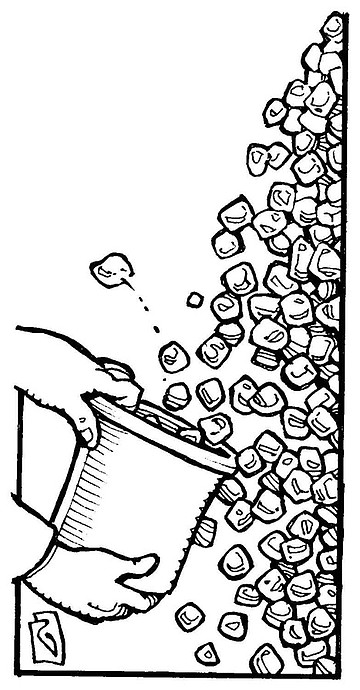 Facebook
Facebook
 X
X
 Instagram
Instagram
 TikTok
TikTok
 Youtube
Youtube
Heymatt:
With all the snow back East, I was wondering if any of the waterfalls freeze when the rivers freeze. Or is moving water not likely to freeze.
— No name please, via email

Oh, yeah. The East Coast branch of the research elf family is having a time. They’re on stilts with snowshoes on the bottom and little floppy Jack in the Box antenna heads on their beanies so they can be located if they blunder into a drift. They keep calling here. We know they want to come visit, so we pretend we’re not home. When they’re here, all they do is complain about the pizza, anyway.
But I’m sure somewhere back there there are a few frozen waterfalls. Niagara Falls has frozen, so anything is possible. Moving water can freeze if conditions are right. First we need sub-freezing temps. Below 32˚ Fahrenheit. We need to slow down the water molecules, and cold will do that. Next, we need a “seed” water molecule, one stuck to a rock, maybe. If the water is cold and slow enough, a second water molecule will eventually stick to the first, then another, then another. Pretty soon, we’ve got ourselves some ice stuck to rock. A good cold wind and maybe a little snow to act as a seed would speed things up. To get a good waterfall freeze takes a lot of details to fall into place.
Waterfalls and rivers usually freeze from their edges toward the middle, though that depends a little on the contours of the rock face behind the falls. Our ice seed maybe gets sprayed by the falling water hitting rocks, and that fine layer of water begins to build up into a pyramid at the foot of the falls or an icicle at the top. If ice has slowed the river enough, we might end up with a solid wall of ice that looks like icicle wallpaper. Perhaps the river is still flowing under its outer shell of ice, and water could be spilling behind the icicle wall. But if it gets cold enough, the ice walls can get thick enough to climb. It’s rock climbers’ favorite winter sport — sticking crampons, ice axes, and rope bolts into a big berg and working their way to the top.

Heymatt:
With all the snow back East, I was wondering if any of the waterfalls freeze when the rivers freeze. Or is moving water not likely to freeze.
— No name please, via email

Oh, yeah. The East Coast branch of the research elf family is having a time. They’re on stilts with snowshoes on the bottom and little floppy Jack in the Box antenna heads on their beanies so they can be located if they blunder into a drift. They keep calling here. We know they want to come visit, so we pretend we’re not home. When they’re here, all they do is complain about the pizza, anyway.
But I’m sure somewhere back there there are a few frozen waterfalls. Niagara Falls has frozen, so anything is possible. Moving water can freeze if conditions are right. First we need sub-freezing temps. Below 32˚ Fahrenheit. We need to slow down the water molecules, and cold will do that. Next, we need a “seed” water molecule, one stuck to a rock, maybe. If the water is cold and slow enough, a second water molecule will eventually stick to the first, then another, then another. Pretty soon, we’ve got ourselves some ice stuck to rock. A good cold wind and maybe a little snow to act as a seed would speed things up. To get a good waterfall freeze takes a lot of details to fall into place.
Waterfalls and rivers usually freeze from their edges toward the middle, though that depends a little on the contours of the rock face behind the falls. Our ice seed maybe gets sprayed by the falling water hitting rocks, and that fine layer of water begins to build up into a pyramid at the foot of the falls or an icicle at the top. If ice has slowed the river enough, we might end up with a solid wall of ice that looks like icicle wallpaper. Perhaps the river is still flowing under its outer shell of ice, and water could be spilling behind the icicle wall. But if it gets cold enough, the ice walls can get thick enough to climb. It’s rock climbers’ favorite winter sport — sticking crampons, ice axes, and rope bolts into a big berg and working their way to the top.
Comments